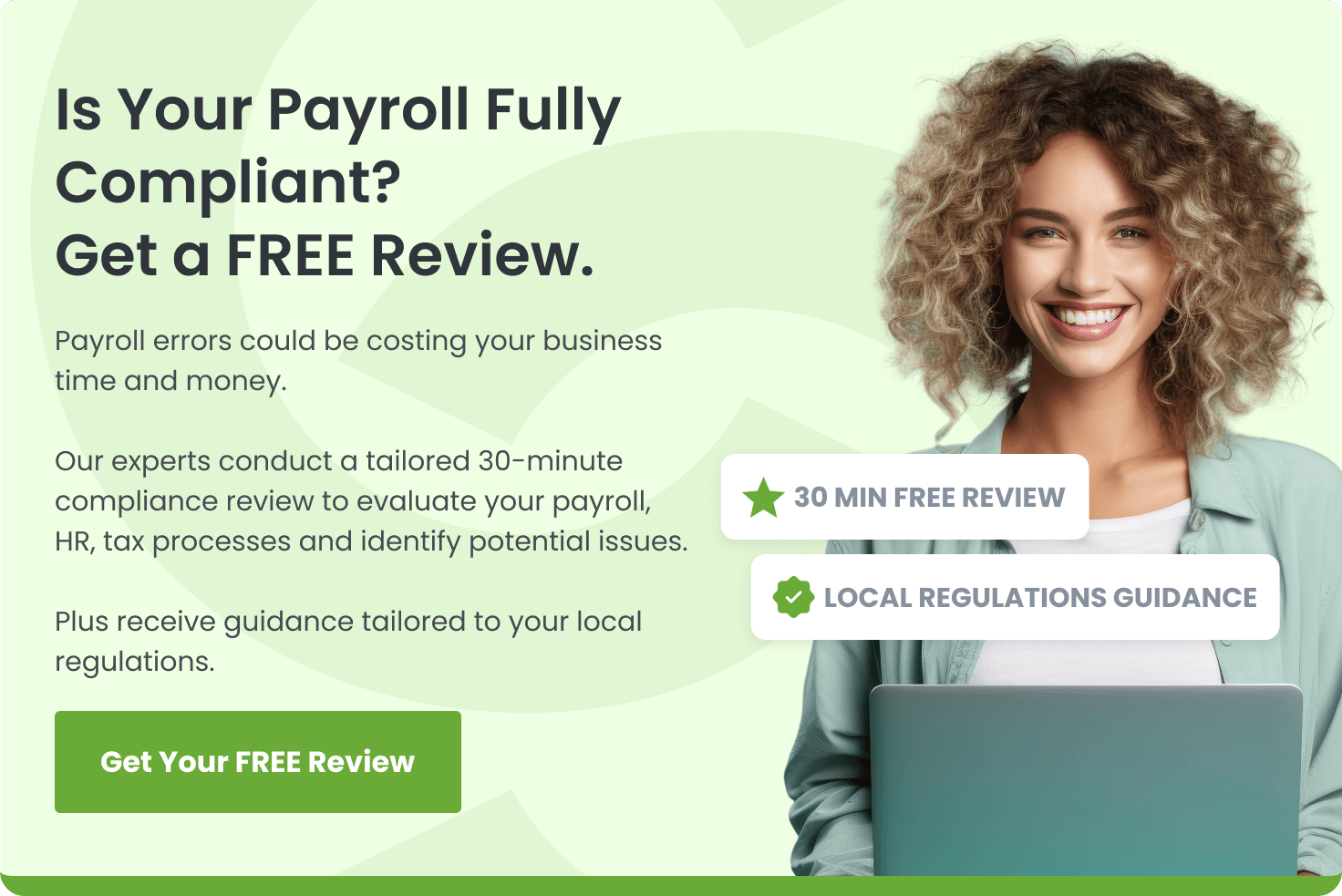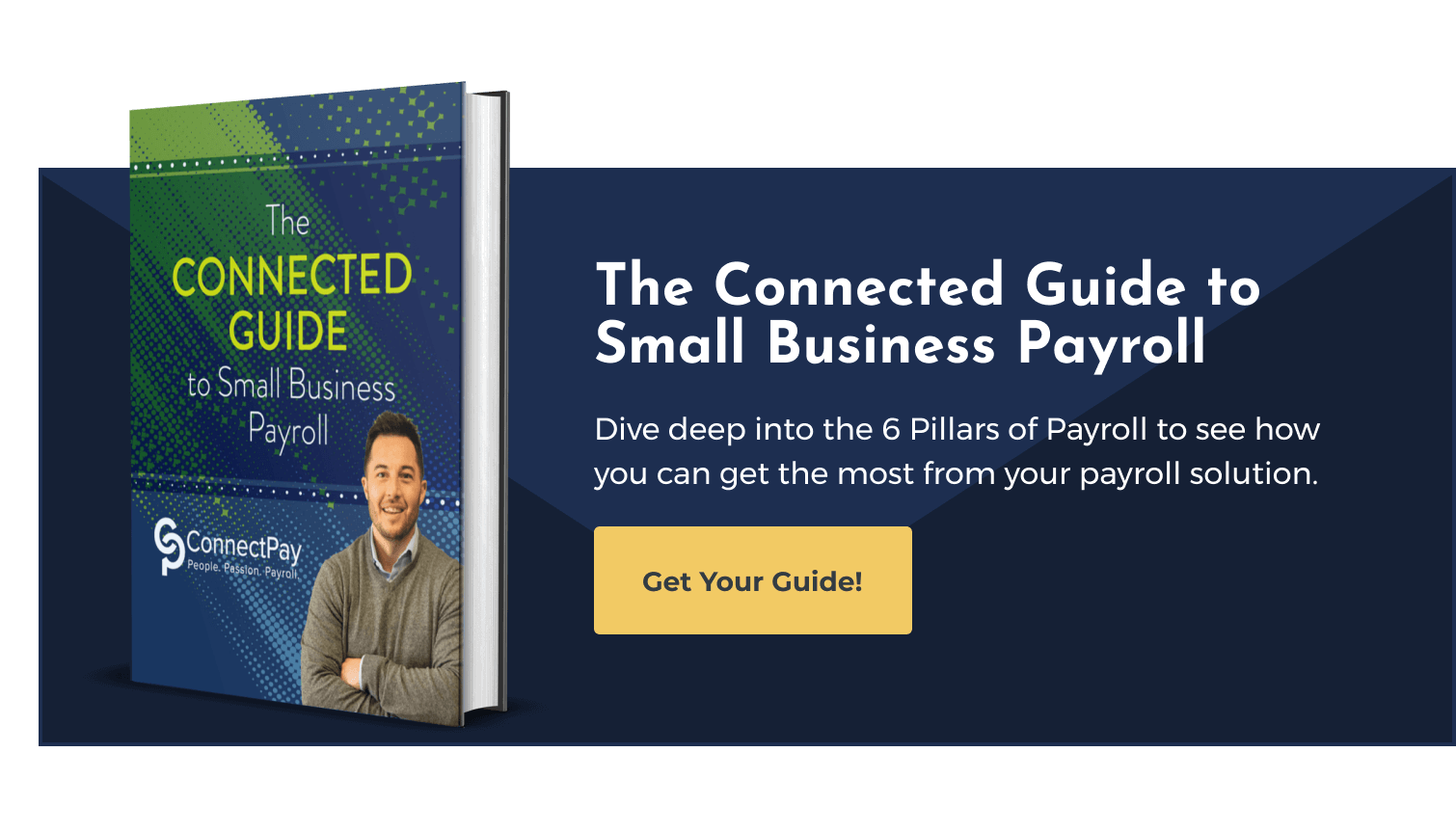The Ultimate Payroll Compliance Checklist for Small Businesses

Starting a small business comes with a lot of excitement… and a lot of stress. For many small business owners, payroll falls more on the “stressor” side of the house. How can you run your payroll efficiently while still putting your focus where it belongs:growing your fledgling business?
Payroll is complex, confusing, and high-stakes. Compliance requirements vary from state to state and even depend on regional regulations. It’s a lot to keep track of - and you have to do it right. As a small business owner, your primary focus should be growing your business. A well-structured payroll compliance strategy can empower you to do just that.
Building and following a thorough payroll compliance checklist simplifies your payroll process during tax season and beyond—and we’re here to help! Read on to explore some must-have items for a payroll compliance checklist for small businesses and how to implement them in yours starting today.
The Ultimate Payroll Compliance Checklist For Small Businesses: Your Guide
Payroll compliance is key when it comes to running a small business. Without it–you’ll quickly run up IRS fines and risk losing all-star employees. Here are some key advantages of nailing payroll compliance processes:
- Avoid Costly Penalties and Interest Charges
A solid payroll compliance program acts as a financial safety net, catching errors before they snowball into penalties and interest charges. Strong compliance habits create a natural "better safe than sorry" mindset and a culture of proactive compliance measures, keeping you alert and shielding your business from potential compliance errors.
- Ensure Accurate Tax Payments and Filings
A trustworthy payroll provider ensures your tax payments and filings are discrepancy-free. That means no more stressing about missed deadlines or fuzzy math: by routinely maintaining records and following regulations, you’ll fulfill your tax responsibilities and create a stable foundation for your business.
- Maintain Compliance with Federal, State, and Local Laws
In order to run payroll, you’ll need to understand and navigate all applicable labor laws and regulations. The more clearly you know what’s required of your business, the better you can follow those legalities and establish a reliable and trustworthy track record. This isn’t the time to make educated guesses–compliance mistakes and misclassifications quickly run up IRS fines and notices.
- Protect Your Team with Proper Pay and Deductions
Your employees are the heart of your business, and you need to give them accurate and timely payments to keep their trust. Maintaining compliance helps you reliably provide your employees with the right pay and deductions, keep your staff happy, and ensure your business is legally sound.
- Create Efficient Payroll Processes
Let's face it: nobody enjoys drowning in paperwork and tangled processes. A well-designed payroll compliance checklist for small businesses streamlines your paperwork and operations–reducing the likelihood of errors and inefficiencies.
While having an internal checklist is a great start, combining a robust internal list with a trusted payroll provider lets you set up a thorough payroll compliance checklist and outsource much of the heavy lifting. When you’re not worried about payroll compliance, you can focus on tackling your business’s goals instead.
8 Must-Have Payroll Items For Your Compliance Checklist
When building your payroll compliance checklist, these eight items are your MVP—your Most Valuable Payroll—items. Let's break down each essential component, including why each is important to maintaining regulatory compliance and how and where these key details fit into your payroll process.
1. Employee classification (W-2 vs 1099)
Getting employee classification right (W-2 for employees and 1099 for contractors) is essential for defining your taxes and setting your business’s foundation. Misclassifying employees can lead to hefty fines and legal troubles that could cripple your small business, so it’s vital your withholding and reporting are correct
One way to make sure you classify employees correctly is to have the proper form filled out when you hire. The W-2 is for hourly or salaried employees, while the 1099 is for freelancers, consultants, and other independent contractors. After employees fill out and verify the documents, keep a copy on file—it's your proof of tax responsibility.
2. Federal tax registrations (EIN, SUI, FUTA, POA)
An Employer Identification Number (EIN) is your business’s uniqueidentifier–it’s comparable to that of a social security number for individuals. Apply for your EIN through the IRS, and register with your state for State Unemployment Insurance (SUI) and Federal Unemployment Tax Act (FUTA.) FUTA.) You’ll also need a Power of Attorney (POA) to work alongside your payroll provider to grant them access to make IRS payments. POA authorizes someone to represent you in tax matters, but don’t just go with any attorney. Find an ally who truly believes in your business and will be personally invested in your compliance success. Without the proper paperwork and identification for your business, you don’t have legs to stand on should any tax questions arise.
3. State/local tax registrations
Local registrations are your company’s access pass. You need them to operate legally in your state or locality. Register with state and local revenue agencies to ensure you're in the clear with regional tax requirements. Ignoring or not knowing these registrations can have severe consequences, including fees, penalties, or even getting your business barred from operating in certain areas.
If you’re moving your business or opening a new location, contact the revenue agencies in the states and localities where you want to operate. They'll guide you through the registration process and ensure you're set up to meet local tax obligations.
Related read: Ultimate Guide: Payroll Services for Small Businesses
4. New hire reporting
Reporting new hires to the appropriate state agency is more about them than you. This step supports efforts to collect child support, alter benefits and healthcare options, and more. Not reporting new hires can result in penalties and negatively impact your employees.
To complete new hire reporting, get essential details about your latest hires (family, health, and benefits information) and report them to the designated state agency within the required timeframe.
5. Minimum wage/overtime pay
Knowing and following minimum wage and overtime pay requirements is one easy way to treat your employees right and stay within legal boundaries. Violating these laws can lead to legal action, back pay claims, unhappy team members, and high turnover rates.
No one wants to get stuck in the constant hiring loop, so keep up-to-date on federal, state, and local minimum wage laws. Additionally, use time and attendance software to keep accurate records of hours worked and pay rates. The right tools and processes help to ensure you’re paying team members for any overtime or extra hours worked.
6. Payroll tax payments and filings
Paying payroll taxes accurately and on time keeps your business running smoothly without risking operational downtime because of errors, causing potential tax investigations. In some cases, non-compliance can lead to fines, interest charges, and legal actions.
Thankfully, payment and filing errors are easy to avoid. Set up a system to calculate, withhold, and remit payroll taxes. Then, file the necessary forms on time with federal, state, and local tax authorities. You can also partner with an experienced payroll provider and tax specialist to remove the headache of payroll taxes from your plate altogether.
7. I-9 verification and retention
Properly verifying and retaining I-9 forms guarantees that your employees are eligible to work in the U.S. and that your organization stays in line with immigration and employment laws. Not checking I-9 requirements can result in fines, legal consequences, and even in employees losing work privileges if they lack proper documentation.
Check I-9 verification by having new hires complete the I-9 form within three days of starting work. Keep these forms on file for at least three years after you hire them or one year after their termination (whichever is later), in line with the current documentation laws.
8. Wage statements and year-end tax forms
Accurate wage statements and year-end tax forms keep your business transparent and help your employees do their taxes correctly. Giving incorrect or delayed forms can impact your team. If they’re bringing problems to your attention, you’re indirectly communicating that they can’t count on you to do things right.
To keep your employees' trust, create and send wage statements promptly. Issue W-2s or 1099s at the end of the tax year and make it easier for them to file by summarizing earnings and tax withholdings in an easy-to-understand format. Promptly providing these statements and forms is essential for keeping employees informed and avoiding the penalties associated with providing your forms late (which are $60 per late form if you provide it within 30 days of the deadline or $120 per late form if you provide them to employees over 30 days past the deadline).
Unlock The Ultimate Payroll Compliance Checklist
An internal payroll compliance checklist is a great starting point for your small business. However, it gets harder and more complex to navigate as you grow. Finding the right payroll partner can take the compliance burden off your shoulders and let you confidently steer your business.
Here at ConnectPay, we understand the complexities of small business payroll. We’ll provide easy-to-use software and connect you with local CPAs and other payroll professionals so you can redirect your valuable time and energy toward running and growing your business.
Want to learn more? Step towards worry-free payroll management by downloading the Connected Guide to Small Business Payroll.








